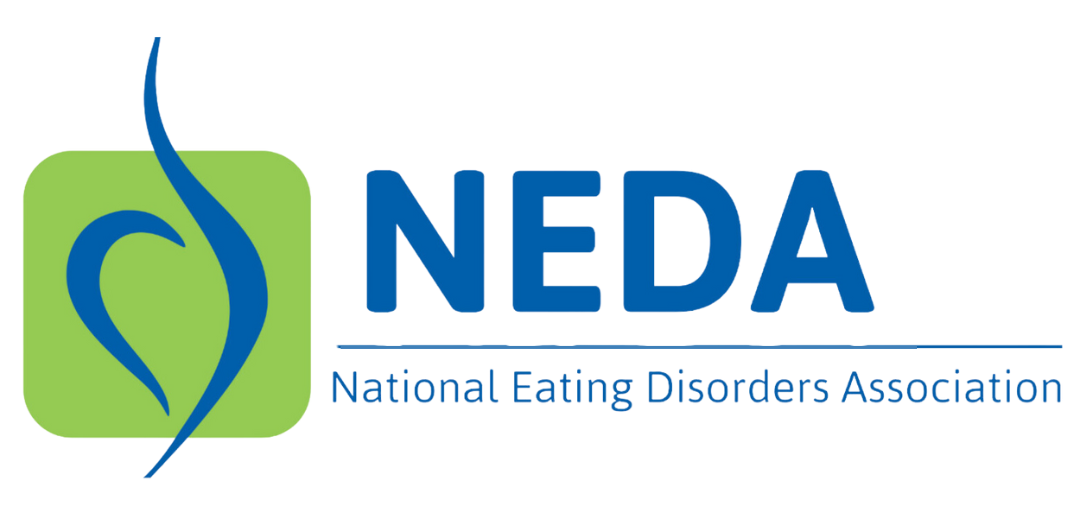Substance Use and Eating Disorders
Reviewed by Kim Dennis, MD, CEDS
As has been highlighted during the drug overdose epidemic in the U.S., substance use disorders (SUD) are well known to increase the risk of premature death, with a large body of research documenting mortality related to tobacco, alcohol, and other drugs. Eating disorders (ED) are also associated with high premature mortality rates and are among the most lethal of all the psychiatric disorders. Death rates for those with both ED and SUD are addictive, leaving those with co-occurring illness at a substantially elevated risk of premature death. Despite the increase in morbidity and mortality of comorbid ED and addiction, patients with this unique co-occurrence have been infrequently studied, leaving them often undiagnosed, untreated and underserved. According to a 2021 study published in the American Journal of Psychiatry, “A major driver of mortality in patients with eating disorders is substance use disorders…eating disorders and substance use disorders are each shown to be associated with high rates of mortality, but the combination of anorexia nervosa, bulimia nervosa, or unspecified eating disorders with a substance use disorder is particularly lethal because the risks of death from one are added to the other.”1
Up to 50% of individuals with eating disorders use alcohol or illicit drugs, a rate five times higher than the general population.2 Up to 35% of individuals who were dependent on alcohol or other drugs also have eating disorders, a rate 11 times greater than the general population.3 Despite the substantial overlap between these two illnesses, there remains a gap between eating disorders and addiction professionals, which impacts training, research and clinical care for those with co-occurring disorders. NEDA is invested in bridging this gap and advocating for the unique needs of this complex patient population.
People who have eating disorders may begin using substances before, at the same time or after eating disorder symptoms appear.2 Less frequently, people first use substances in a problematic way after achieving full recovery from their eating disorder. Those struggling with co-occurring substance use and disordered eating should speak with a trained professional who can understand, diagnose, and treat both disorders. It can be difficult to find providers who have in-depth understanding and experience with treating both diseases, but people who have both are best served by these professionals. Finding a clinician who understands both of these illnesses as brain diseases, with significant genetic underpinnings and bio-psycho-social-spiritual manifestations is critical. Clinicians with this understanding are equipped to provide you care that is free from shame or stigma, which is commonly (even if unintentionally) heaped on by providers who don’t understand one or the other of these illnesses.
The substances most commonly used by individuals with eating disorders are alcohol and nicotine.2 Other substances include cannabis, caffeine, laxatives, emetics, diuretics, stimulants, amphetamines, cocaine, sedatives and opioids, including heroin. Prescription medications for conditions like ADHD, pain, anxiety, migraines, low thyroid, diabetes and even depression can be misused by people with eating disorders alone or by those co-occurring with SUD.2
Eating disorders and substance use share a number of common risk factors, including genetic risks, brain chemistry, family history, trauma, low self-esteem, depression, anxiety, and social pressures. Other shared characteristics include compulsive behavior, impulsivity, loss of control/over-control cycles, social isolation and inability to stop the behavior without help.2
One of the most important reasons to seek help if you have an eating disorder plus addiction is that each of these illnesses alone significantly increases mortality rates.1 When the two occur together, medical problems occur earlier and tend to be more severe, suicide rates are higher, co-occurring mental health and trauma related disorders tend to be more severe, and treatment needs become greater.1,4
As with eating disorders, early intervention of substance use and including families in treatment is essential. Despite the bleak increases in morbidity and mortality for those with co-occurring illness, treatment works and recovery is possible!
Substance Use Warning Signs & Symptoms5
- Amount: Taking the substance in larger amounts for longer than intended
- Control: Wanting to cut down or quit using but are unable to
- Time: Spending large amount of time obtaining the substance
- Cravings: Experiencing cravings or a strong desire to use the substance
- Obligations: Repeatedly unable to carry out major obligations at work, school or home
- Social: Continued use of the substance despite persistent or recurring social or interpersonal problems or harm to relationships
- Activities: Stopping or reducing important social, occupational or recreational activities due to substance use
- Hazard: Continually using the substance in physically hazardous situations such as driving under the influence
- Harm: Consistently using the substance, despite knowledge of the substance causing persistent or recurrent physical or psychological problems
- Tolerance: Building tolerance means needing to increase the amount of the substance to achieve the desired effect
- Withdrawal: Experiencing withdrawal symptoms that is characteristic of the drug that you are stopping, or when the substance is used to avoid withdrawal symptoms
What is “Drunkorexia”?
Drunkorexia is a colloquial term that refers to altering eating behaviors to either offset planned caloric intake from alcohol or to increase/speed the effects of alcohol. Not a clinical diagnosis and not necessarily indicative of a substance use disorder, the term is often used in the context of college campuses to describe disordered eating and binge drinking occurring together.6
Regardless of whether the behaviors become diagnosable conditions, the relationship between food restriction, purging behaviors and high levels of alcohol use puts individuals at risk for significant medical complications, up to and including sudden death.1 It’s important that these dangerous behaviors be identified and treated as soon as possible.7,8
Treatment Considerations
- Find an eating disorder specialist that can also address addiction. Look for people who have eating disorders and addiction certifications by professional organizations in each field.
- Research levels of care and treatment providers to determine a plan that fits your specific needs. Whenever possible, seek out specialty programs specifically dedicated to treating people with co-occurring ED and SUD.
- Most eating disorder treatment facilities are equipped to deal with patients who abuse over-the-counter diet pills, laxatives, emetics and diuretics, but not all are able to accommodate the patient that requires medical detoxification or to provide actual treatment to those with addiction. Offering a controlled setting that does not allow alcohol on the premises is not the same as active treatment of SUD, which requires specially trained professionals. Similarly, offering nutrition services as a part of primary addiction treatment is insufficient to meet the needs of someone who truly has co-occurring ED.
- Educate yourself, be proactive, and know that both these disorders are treatable.
- Seek treatment, connect with others and find recovery.
Learn more about treatment here.
Learn more about finding treatment providers in your area here.
Sources
[1] Mellentin, A. I., Mejldal, A., Guala, M. M., Støving, R. K., Eriksen, L. S., Stenager, E., & Skøt, L. (2022). The Impact of Alcohol and Other Substance Use Disorders on Mortality in Patients With Eating Disorders: A Nationwide Register-Based Retrospective Cohort Study. The American journal of psychiatry, 179(1), 46–57. https://doi.org/10.1176/appi.ajp.2021.21030274
[2] Bahji, A., Mazhar, M. N., Hudson, C. C., Nadkarni, P., MacNeil, B. A., & Hawken, E. (2019). Prevalence of substance use disorder comorbidity among individuals with eating disorders: A systematic review and meta-analysis. Psychiatry research, 273, 58–66. https://doi.org/10.1016/j.psychres.2019.01.007
[3] Hudson, J. I., Hiripi, E., Pope, H. G., Jr, & Kessler, R. C. (2007). The prevalence and correlates of eating disorders in the National Comorbidity Survey Replication. Biological psychiatry, 61(3), 348–358. https://doi.org/10.1016/j.biopsych.2006.03.040
[4] Brewerton, T.D., Brady, K. (2014). The Role of Stress, Trauma, and PTSD in the Etiology and Treatment of Eating Disorders, Addictions, and Substance Use Disorders. In: Brewerton, T., Baker Dennis, A. (eds) Eating Disorders, Addictions and Substance Use Disorders. Springer, Berlin, Heidelberg. https://doi.org/10.1007/978-3-642-45378-6_17
[5] American Psychiatric Association. (2022). Diagnostic and statistical manual of mental disorders: DSM-5-TR. American Psychiatric Association Publishing. https://doi.org/10.1176/appi.books.9780890425787
[6] Szynal, K., Górski, M., Grajek, M., Ciechowska, K., & Polaniak, R. (2022). Drunkorexia – knowledge review. Alkoreksja – przegląd wiedzy. Psychiatria polska, 56(5), 1131–1141. https://doi.org/10.12740/PP/OnlineFirst/134748
[7] Choquette, E. M., Ordaz, D. L., Melioli, T., Delage, B., Chabrol, H., Rodgers, R., & Thompson, J. K. (2018). Food and Alcohol Disturbance (FAD) in the U.S. and France: Nationality and gender effects and relations to drive for thinness and alcohol use. Eating behaviors, 31, 113–119. https://doi.org/10.1016/j.eatbeh.2018.09.002
[8] Rahal, C. J., Bryant, J. B., Darkes, J., Menzel, J. E., & Thompson, J. K. (2012). Development and validation of the Compensatory Eating and Behaviors in Response to Alcohol Consumption Scale (CEBRACS). Eating behaviors, 13(2), 83–87. https://doi.org/10.1016/j.eatbeh.2011.11.001

